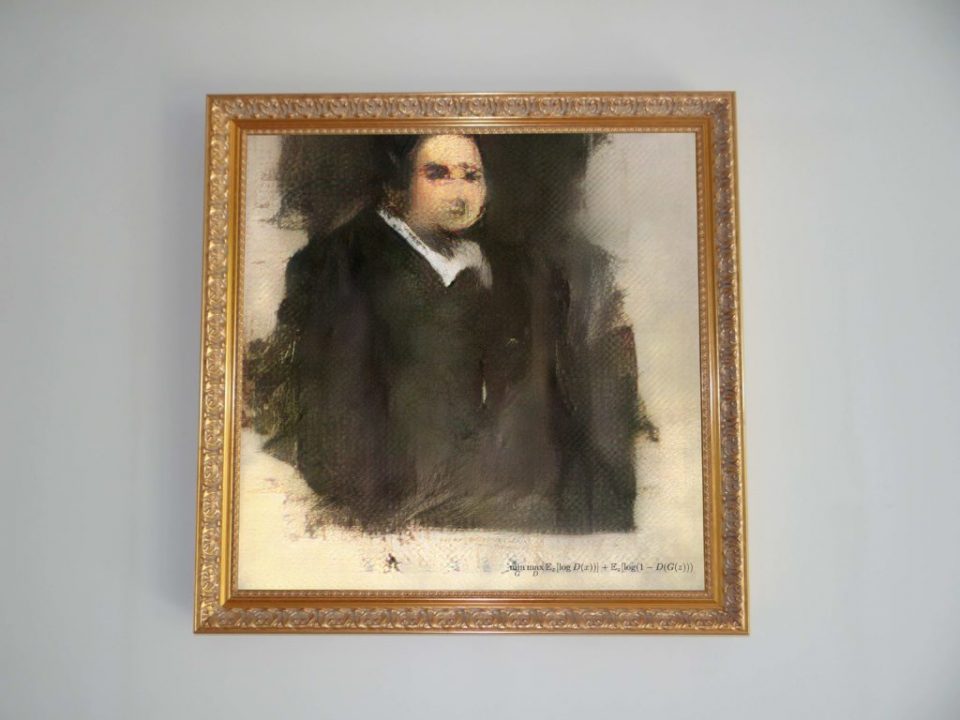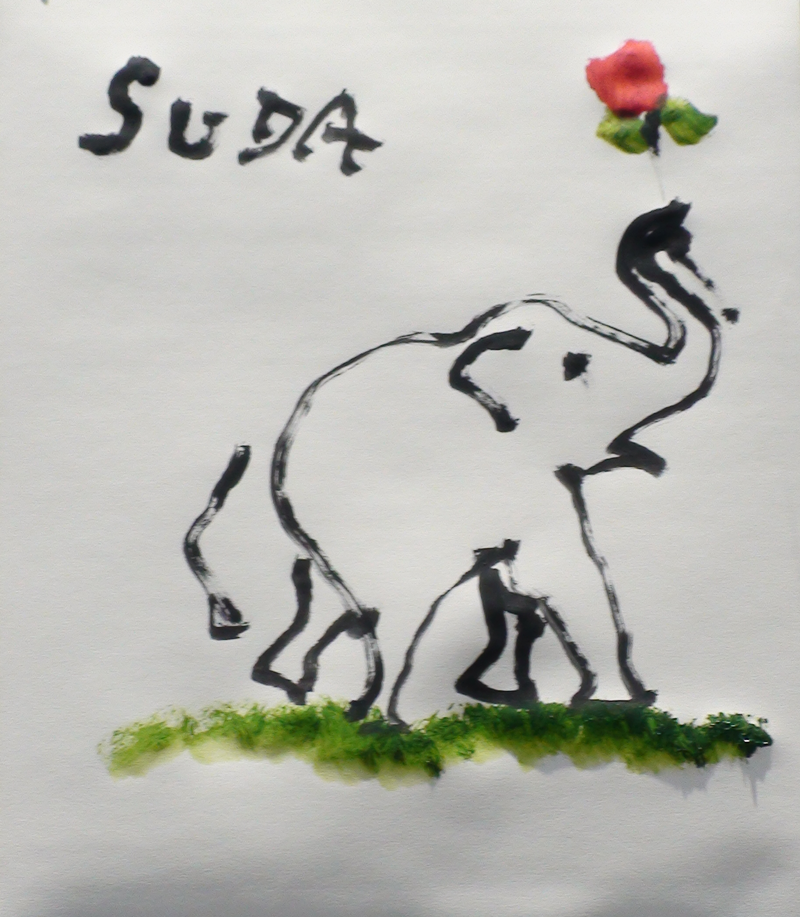The Turing Test, a famous thought experiment designed to prove the existence of human intelligence in a computer, depends on a computer being able to successfully convince a (human) observer that it is human. But what if, one day, you were told that the entirety of world art had been produced by artificial intelligence (AI). Would that change anything for you?
I’m glad to be able to report that humans have in fact created the vast majority of paintings. Nonetheless, for decades, we have had the capacity to program computer algorithms to generate images. This, however, is old news. In the last few years though there has been an additional major breakthrough. Algorithms now ‘learn’ on their own and thus take an additional autonomous step – completely removed from the artist – before generating an image. The algorithms no longer simply follow a set of rules, but instead ‘learn’ an aesthetic by analysing images, and then use them to generate their own versions. [1] In actuality, the process is not this simple, and the artist is of course involved in choosing images for input and output at either end. Nevertheless, it feels like something is different this time. Indeed, when the first ever AI original painting was sold in 2018, Christie’s noted that it was: “not the product of a human mind…It was created by artificial intelligence, an algorithm defined by [an] algebraic formula.”

But maybe this distinction is artificial. After all, what’s really different? Maybe, I might think, the difference is that the method is completely new. I might, for example, hypothesise that it’s the first time a machine has created a piece of art. But that can’t be it. After all, many installations since the 60s have consisted of objects generated by machines. A local Glasgow example is Ellie Harrison’s ‘The History of Financial Crises, in which a row of popcorn machines go off at pre-calculated times during the day. Or maybe, I could say, the difference is that there is a step in the method completely removed from a human mind? To put it in Kantian terminology: a non-human faculty (something like a potential, or a power) has created, or contributed to creating, the art. But that can’t be it either. For one thing, what should we count as a step removed from the human mind? Should a paintbrush count as such a step? Should a 15th C Italian Renaissance painter’s apprentice? Also, how should we think about animal art here? Throughout history, humans have coaxed animals into creating art – for example, I recently saw a beautiful painting of an elephant painted by an elephant!


As fun as it is, the game of compartmentalising artistic methodologies can become silly and overly theoretical: the truth is, artistic methods are never clear-cut, and all exist on a messy continuum. More interesting, at least to me, is how the existence of new AI original art might bear on aesthetic evaluation – which is to say which artistic qualities constitute aesthetic value. To speak plainly, a question that asks what makes good art good. I think there is good reason to think that the development of AI original art does bear on aesthetic evaluation. Furthermore, if you answered yes to my original question about the hypothetical world in which all art was created by AI, the likelihood is that you do too.
Honestly, I’m not entirely sure why I think AI original art bears on aesthetic evaluation. But I’ll leave you with one idea. If you believe that artistic value partially lies in the intention of its creator, this might be why you think that AI art is worthless, or at least less good than its human counterpart.
—
If you have any insights or relevant reading on this topic, I would love to hear from you. You can reach me at Hamish.ik.stewart@gmail.com. If you’re interested in this area and want to find out more, please visit Glasgow University’s Philosophy Podcast, Thoughts, as the topic will definitely be discussed on the show soon.
Bibliography
Images:
Image 1, “Portrait of Edward de Bellamy, Obvious (collective), https://www.dezeen.com/2018/10/29/christies-ai-artwork-obvious-portrait-edmond-de-belamy-design/
Image 2, “The History of Financial Crises”, Ellie Harrison, https://www.ellieharrison.com/financialcrises/
Image 3, “The Rose”, Suda, https://thaielephantart.com/product/suda-creations-the-rose/
- [1] ELGAMMAL, A., 2020. AI Is Blurring The Definition Of Artist. [online] American Scientist. Available at: <https://www.americanscientist.org/article/ai-is-blurring-the-definition-of-artist> [Accessed 26 August 2020].
Some food for though there for sure!